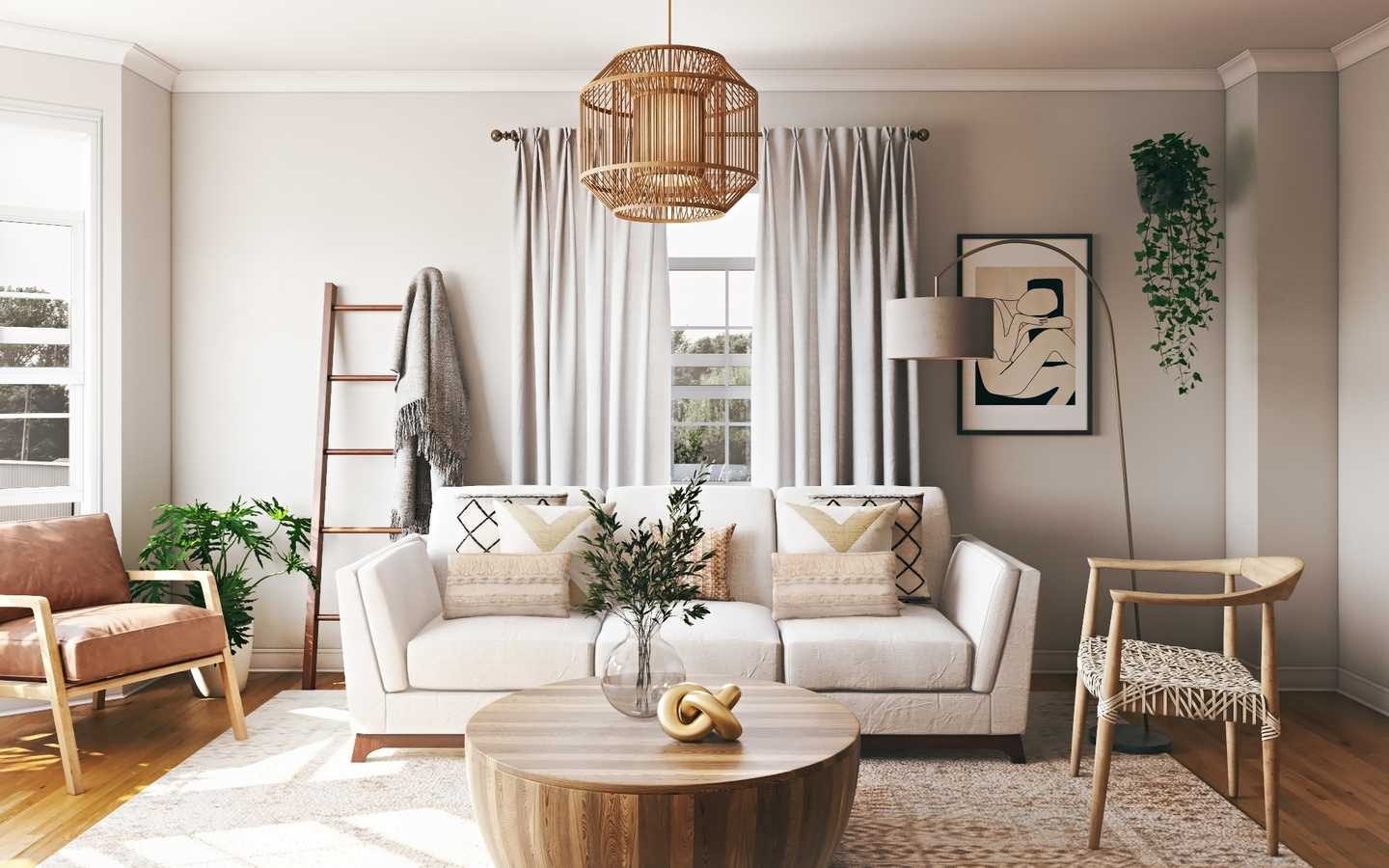The quintessential Scandinavian living room embodies an ineffable quality that combines minimalism with warmth, creating spaces that are both aesthetically pleasing and inherently functional. This distinctive design philosophy, deeply rooted in Nordic culture, has transcended geographical boundaries to become a global phenomenon.
The juxtaposition of clean lines with organic elements creates an ambiance that’s simultaneously sophisticated and welcoming. As urban living spaces become increasingly compact, the Scandinavian approach to interior design offers pragmatic solutions without compromising on style or comfort.
In this comprehensive guide, we’ll explore fourteen innovative ways to transform your living room into a Scandinavian haven, incorporating elements that reflect the region’s design ethos while maintaining authenticity and practicality.
Scandinavian Living Room Ideas
Whether you’re planning a complete renovation or seeking subtle ways to introduce Nordic elements into your existing space, these ideas will help you achieve that coveted Scandinavian aesthetic while ensuring your living room remains a true reflection of your personal style.
1. Embrace Natural Light
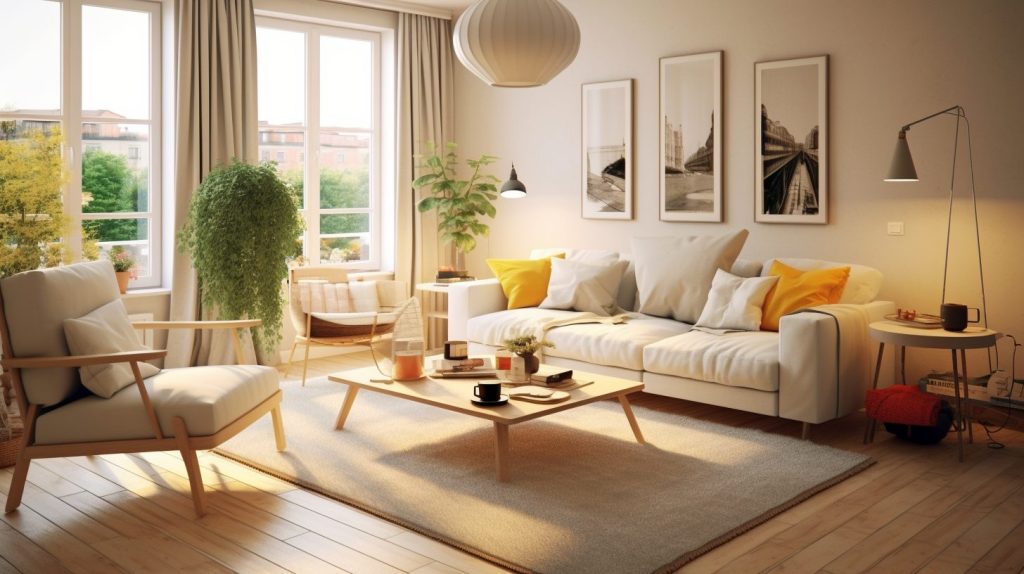
Natural illumination stands as the cornerstone of Scandinavian interior design, serving as a precious commodity in Nordic countries where daylight can be scarce during winter months. Large, unobstructed windows become the focal point, often left bare or adorned with sheer, lightweight curtains that filter light without blocking it entirely. This approach not only maximizes the available daylight but also creates an organic connection with the outdoor environment.
The strategic placement of mirrors and reflective surfaces can amplify natural light, making the space appear larger and more inviting. Consider positioning mirrors opposite windows or in darker corners to bounce light throughout the room. This technique not only brightens the space but also adds depth and dimension to your living area.
2. Neutral Color Palette with Thoughtful Accents
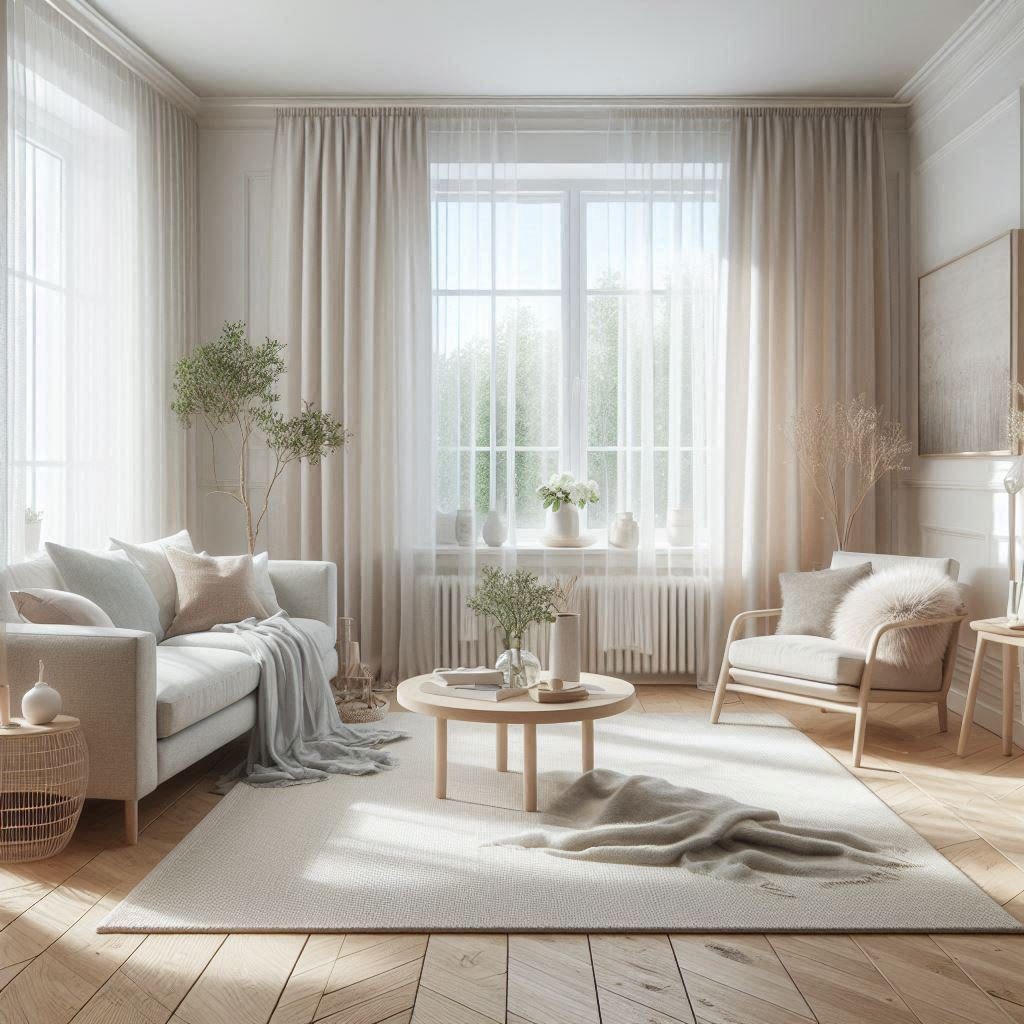
The foundation of Scandinavian design relies heavily on a neutral color scheme, primarily featuring whites, grays, and beiges. These colors create a clean, bright backdrop that reflects light and opens up the space. The key lies in layering different shades and textures within this neutral palette to add depth and interest.
To prevent the space from feeling sterile, incorporate carefully chosen accent colors inspired by nature – soft blues, gentle greens, or muted terracotta. These touches of color can be introduced through artwork, cushions, or small decorative items, creating visual interest while maintaining the overall serene atmosphere.
3. Incorporate Natural Materials
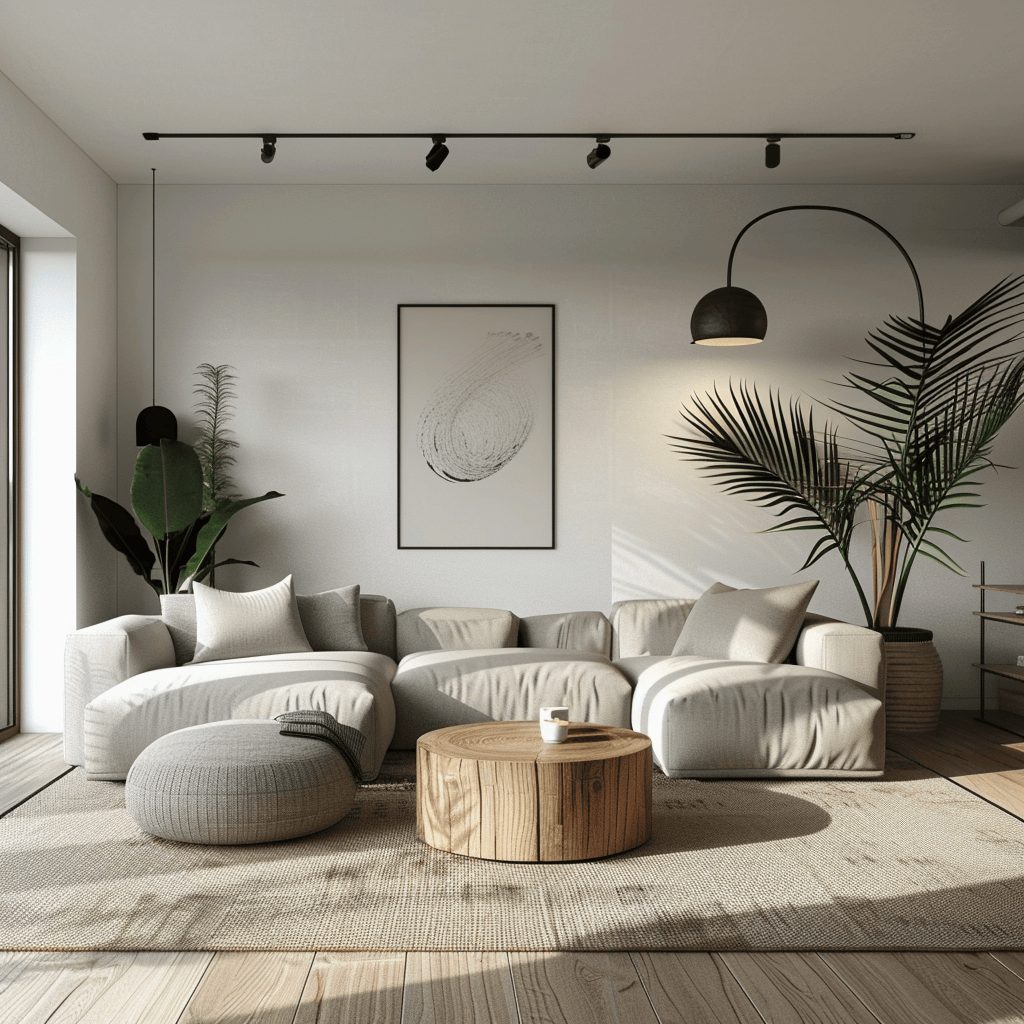
Wood serves as the primary material in Scandinavian design, bringing warmth and natural beauty to the living space. Light-colored woods like pine, birch, and ash are particularly popular, often featured in flooring, furniture, and architectural elements. The natural grain patterns and textures add character while maintaining the clean, minimalist aesthetic.
Beyond wood, incorporate other natural materials such as stone, wool, leather, and linen. These elements not only add tactile interest but also create a multi-sensory experience that’s both grounding and sophisticated. Consider a stone fireplace surround, woolen throws, or leather accent chairs to bring these materials into your space.
Related Guide: 13 Scandinavian Bedroom Ideas
4. Minimize Clutter with Smart Storage
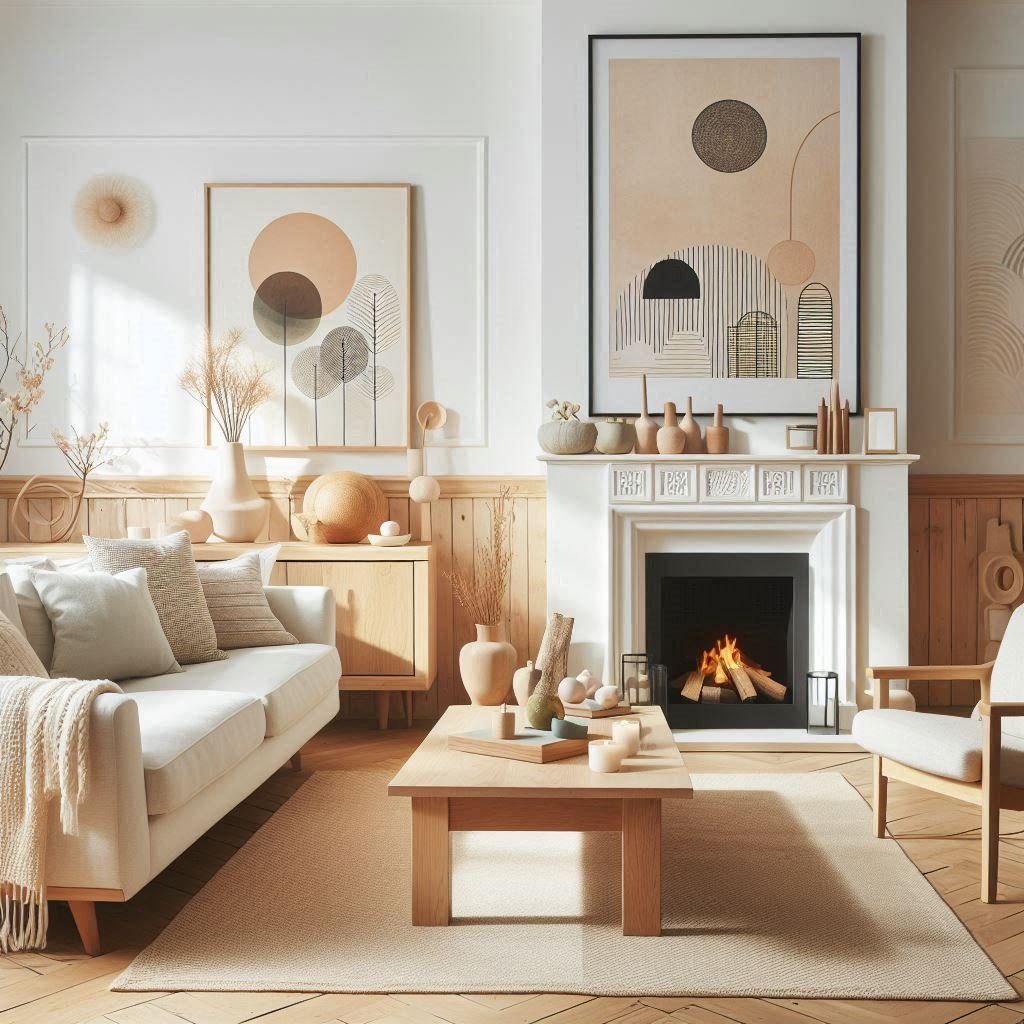
Storage solutions in Scandinavian design are both beautiful and functional, helping maintain the clean, uncluttered aesthetic that’s essential to this style. Built-in cabinets, floating shelves, and multi-functional furniture pieces provide ample storage while maintaining visual harmony.
Consider incorporating storage furniture that doubles as decorative elements, such as a sleek credenza or a wall-mounted storage system. The key is to ensure that everyday items have designated places, allowing the space to remain organized and serene while still being practical for daily life.
5. Layer Cozy Textiles
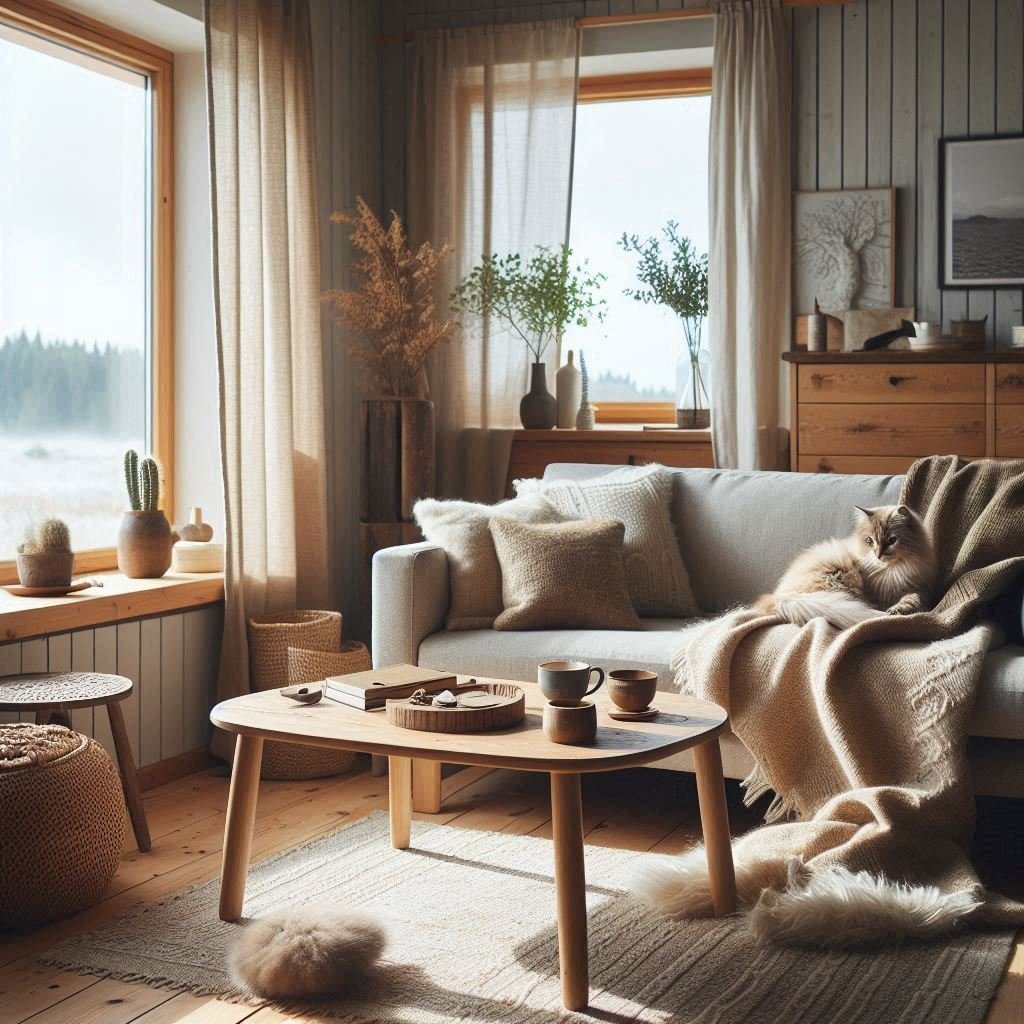
In Scandinavian homes, textiles play a crucial role in creating comfort and visual interest while maintaining the overall minimalist aesthetic. Sheepskin throws, chunky knit blankets, and soft cushions in various textures but coordinating colors add warmth and invitation to the space.
The layering of textiles should be thoughtful and purposeful, avoiding excess while ensuring comfort. Consider mixing different materials and textures – perhaps a linen sofa adorned with wool cushions and a cashmere throw – to create a rich, tactile experience that remains true to the clean-lined Scandinavian aesthetic.
6. Focus on Functional Furniture
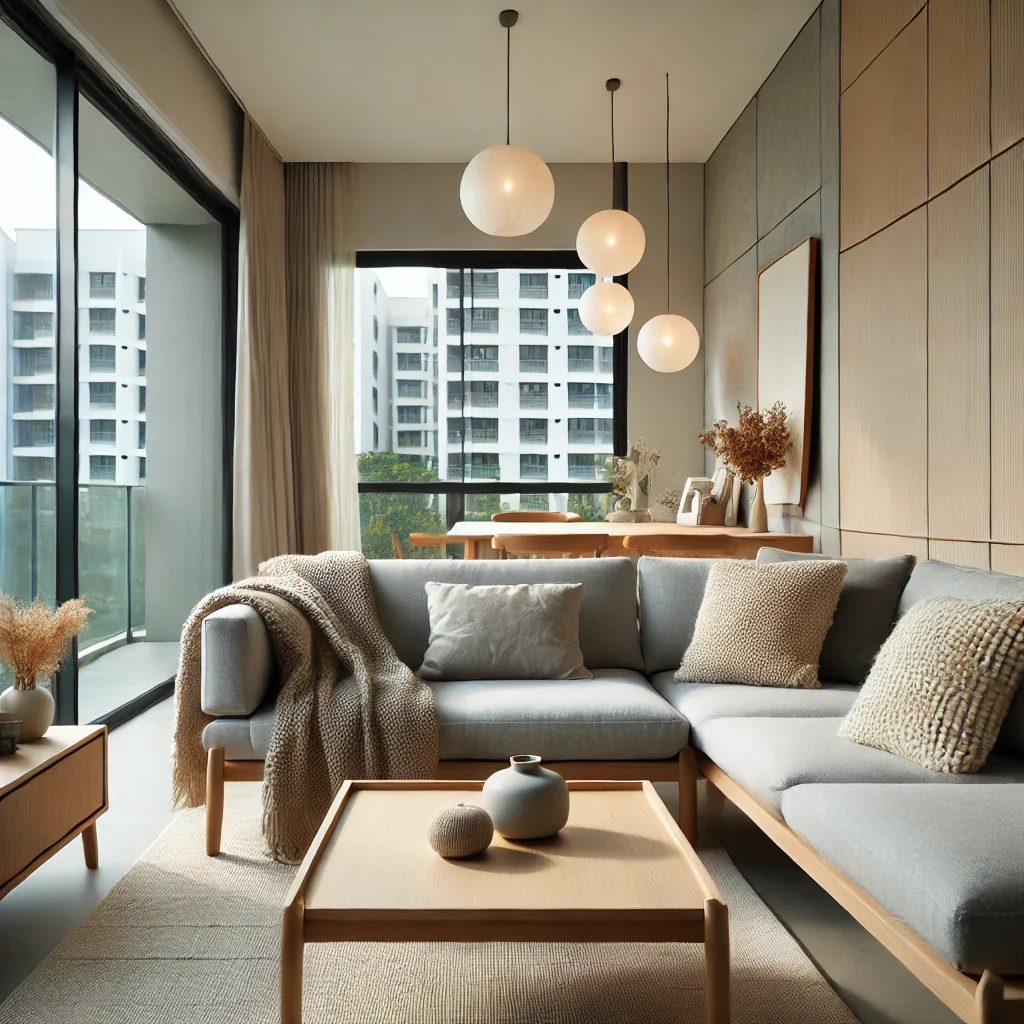
Furniture selection in Scandinavian design prioritizes both form and function, featuring clean lines and practical design elements. Pieces should be well-crafted and purposeful, avoiding unnecessary ornamentation while maintaining visual interest through their inherent design qualities.
Choose furniture that combines comfort with style – think streamlined sofas with elegant legs, armchairs that provide proper support while maintaining a light visual weight, and coffee tables that offer both storage and surface area. Each piece should earn its place in the room through both its aesthetic contribution and practical utility.
7. Add Organic Elements
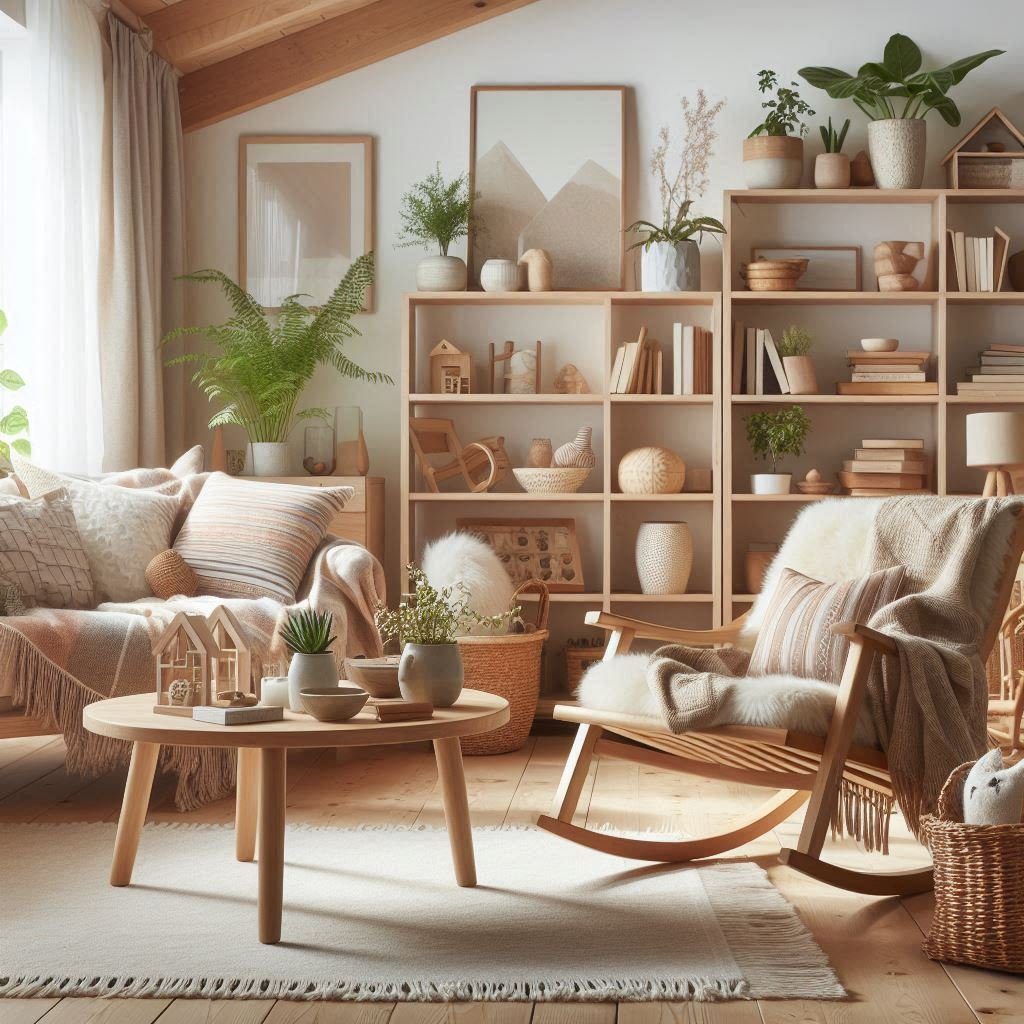
Bringing nature indoors is a fundamental aspect of Scandinavian design, helping to create a connection with the natural world. Potted plants, particularly those with architectural qualities like fiddle leaf figs or snake plants, add life and organic shapes to the space.
Beyond live plants, incorporate other natural elements such as dried grasses, branches, or botanical prints. These elements should be carefully curated to maintain the clean aesthetic while adding visual interest and connecting the indoor space with nature.
8. Implement Strategic Lighting
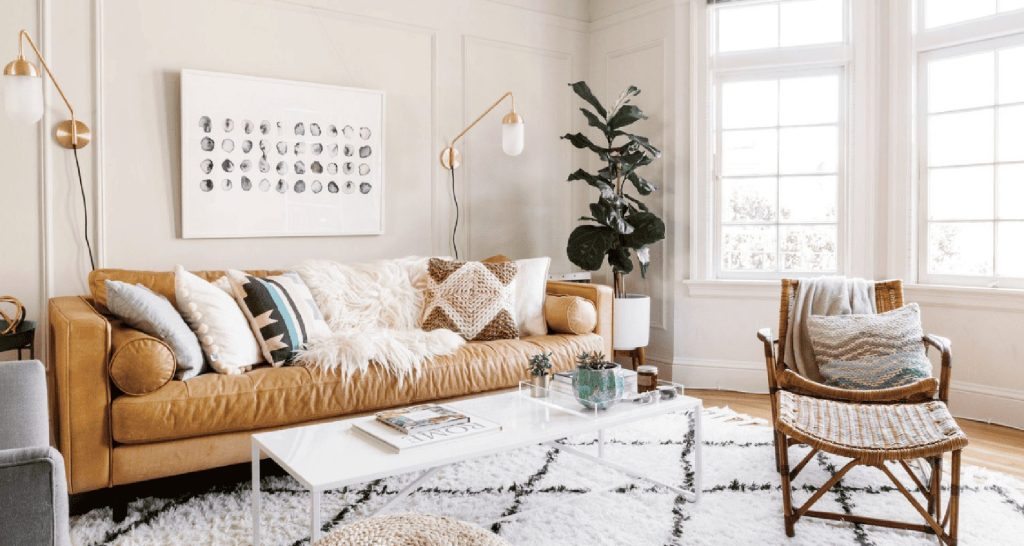
While natural light takes precedence during the day, thoughtful artificial lighting is crucial for creating ambiance in the evening hours. A mix of lighting sources at different heights helps create a warm and inviting atmosphere while maintaining functionality.
Layer your lighting with a combination of floor lamps, table lamps, and pendant lights, choosing fixtures that combine clean lines with interesting design elements. Consider incorporating candles as well, as they’re a staple in Scandinavian homes and add both warmth and atmosphere.
9. Create Comfortable Conversation Areas
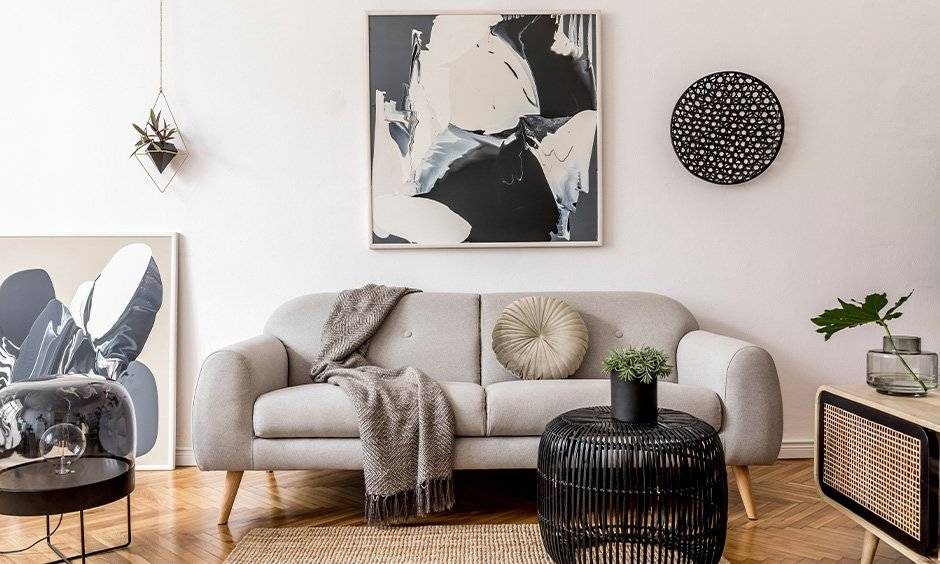
The arrangement of furniture should promote social interaction while maintaining an open, airy feel. Create intimate seating areas that encourage conversation but avoid overcrowding the space. The layout should allow for easy movement while ensuring each seat has a clear purpose and relationship to others.
Consider the flow of the room and how people will naturally move through the space. Furniture should be arranged to create clear pathways while establishing distinct zones for different activities, such as conversation, reading, or media viewing.
10. Incorporate Modern Elements
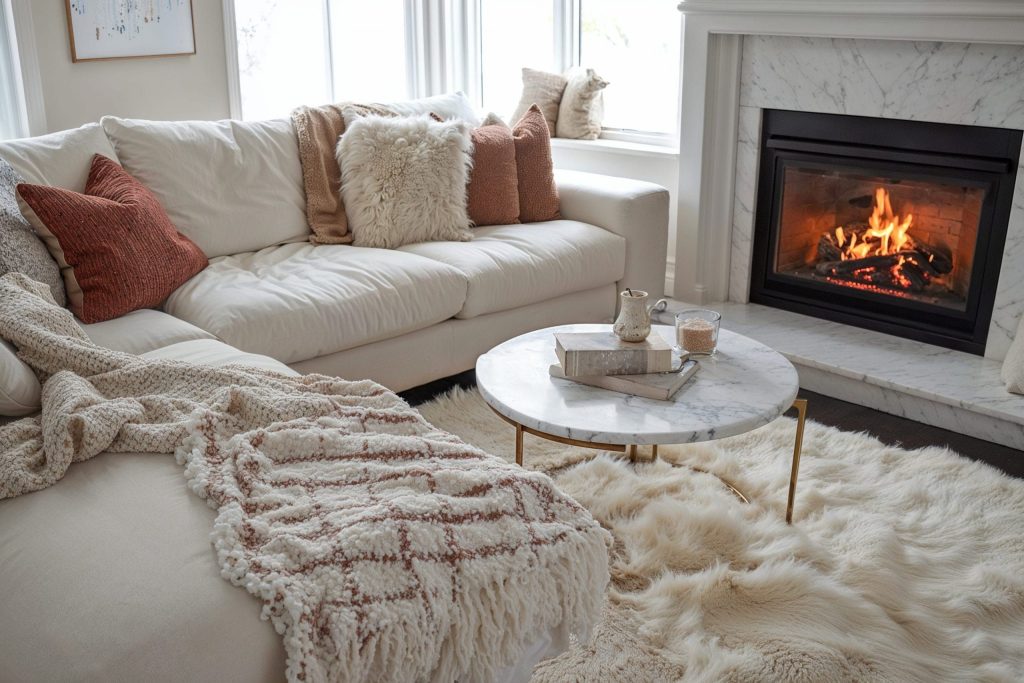
While Scandinavian design often embraces traditional elements, incorporating modern touches helps create a contemporary feel. This might include sleek technology solutions, contemporary art pieces, or modern lighting fixtures that complement the overall aesthetic.
The key is to balance these modern elements with more traditional Scandinavian design features, ensuring they enhance rather than dominate the space. Consider hiding technology when possible or choosing pieces that complement the room’s clean lines and minimalist approach.
11. Add Architectural Interest

Even in simple spaces, architectural details can add significant visual interest while maintaining the clean Scandinavian aesthetic. Consider adding subtle architectural elements such as simple crown molding, painted wood paneling, or built-in shelving units.
These features should enhance the room’s natural architecture without overwhelming it. The goal is to create interest through clean lines and thoughtful details rather than ornate embellishments.
Related Guide: 12 Scandinavian Dining Room Ideas
12. Use Textural Contrasts
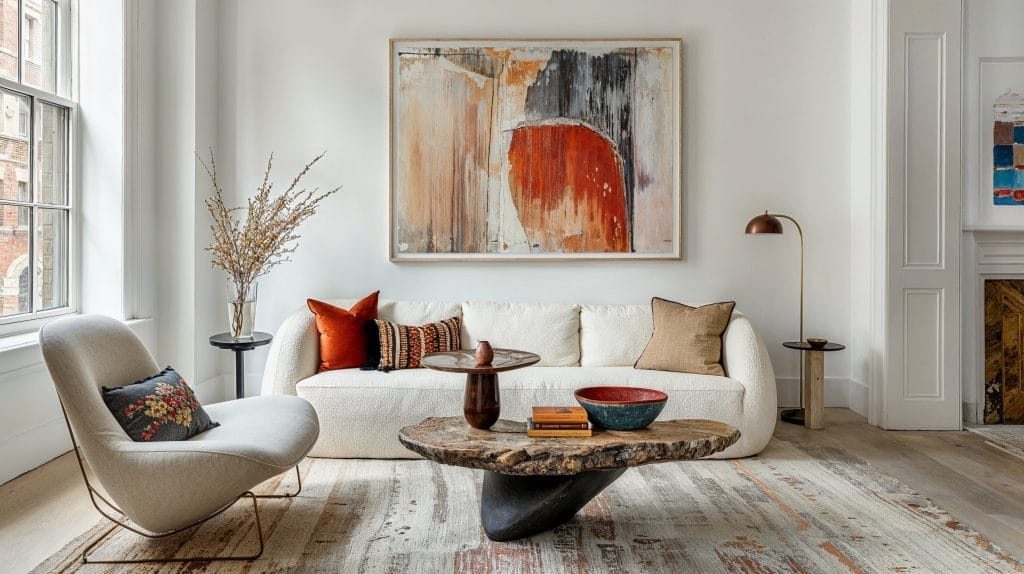
Creating visual interest through textural contrasts is essential in Scandinavian design. Combine smooth surfaces with rough ones, soft textiles with hard materials, and matte finishes with subtle sheens to create a rich sensory experience.
These contrasts should be thoughtfully curated to maintain harmony while adding depth to the space. Consider how different textures interact with light and how they contribute to the overall atmosphere of the room.
13. Display Art Mindfully
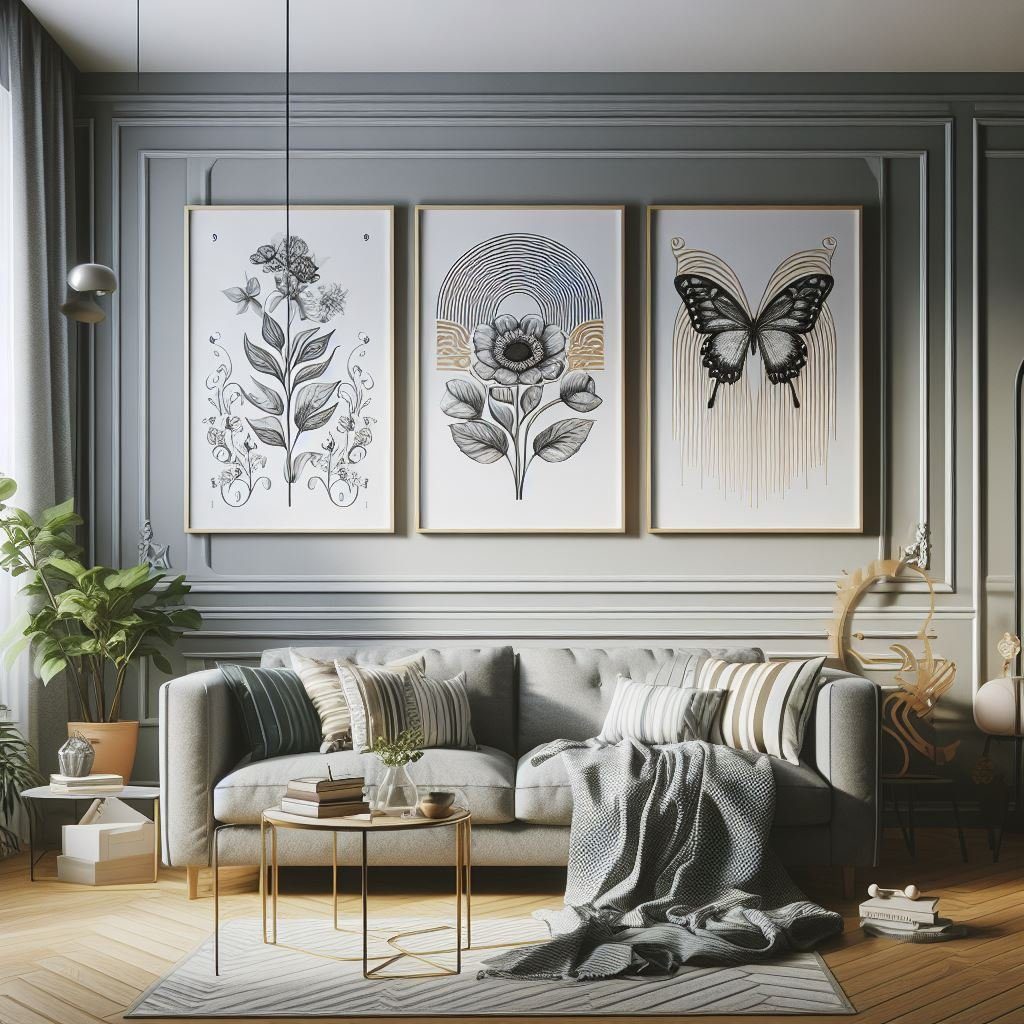
Artwork in Scandinavian living rooms tends to be carefully selected and thoughtfully displayed. Choose pieces that complement the room’s color palette and overall aesthetic, whether they’re black and white photographs, abstract paintings, or simple line drawings.
Art should be displayed in a way that allows each piece to breathe, avoiding cluttered gallery walls in favor of more minimal arrangements. Consider using floating frames or simple matting to maintain the clean aesthetic.
14. Balance Empty Space
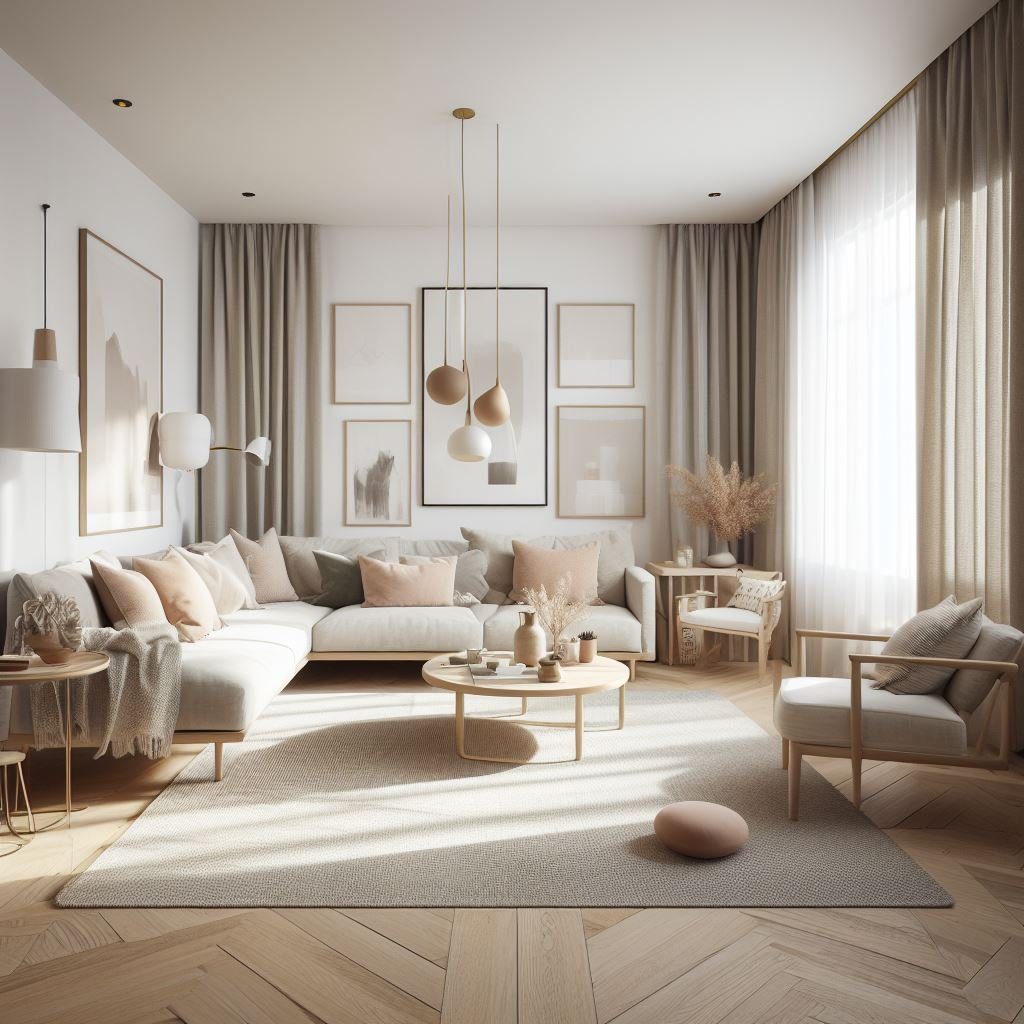
The concept of negative space is crucial in Scandinavian design. Empty space should be viewed as an intentional design element rather than an area waiting to be filled. This approach helps create a sense of calm and allows the eye to rest between design elements.
Consider the balance between furnished areas and empty space, ensuring that the room doesn’t feel either too sparse or too crowded. This balance is key to achieving the serene, welcoming atmosphere characteristic of Scandinavian design.
Conclusion
Creating a Scandinavian-inspired living room is about more than following a set of design rules – it’s about crafting a space that combines functionality with aesthetic beauty while promoting wellbeing and comfort. By incorporating these fourteen ideas thoughtfully and selectively, you can create a living space that embodies the essence of Scandinavian design while meeting your personal needs and preferences.
Remember that the key to success lies in maintaining balance: between light and shadow, empty space and furnishings, and practical function and visual appeal. The result should be a living room that feels both timeless and contemporary, minimal yet warm, and most importantly, a space that you’ll love living in for years to come.

